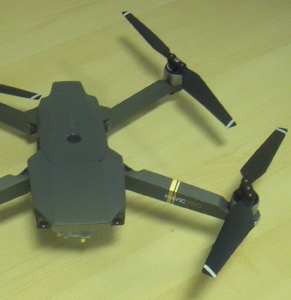Illegal drone intrusions in airport airspace have continued to rise, according to the safety body the UK Airprox Board. The UKAB recorded some 125 dangerous nearby encounters of drones with aircraft in 2018, compared with 93 and 71 in the previous two years. Heathrow was the airport affected most often. The Board also records cases of a ‘collision hazard’ between a drone and the military, such as this case with an Apache helicopter near Woodbridge in Suffolk in October 2018; when neither the drone operator nor the Apache pilot had any knowledge about each other.
Last month the Department for Transport announced the no-fly zone around airports increased from 1km to 5km; and flying over 400ft is also illegal. Head of Flight safety at the British Airline Pilots Association, Dr Rob Hunter said drone users need to understand that that flying a drone within 5km of an airport or over 400ft is not only putting lives at risk but is also against the law.
Hunter said: “If you are planning to fly a drone you must do so responsibly. If you don’t you will face significant fines or even time in prison. This new legislation, which BALPA campaigned for, is a step towards the safe integration of drones in to UK airspace. But the puzzle isn’t complete just yet and now is not the time to become complacent. The Government must ensure it delivers its promised drone registration scheme and looks at protections for helicopters, which operate in similar airspace to drones away from the no-fly zones around airports.”
A Drones Bill is being drafted. While UKAB recorded only a handful of such events from 2010 to 2014, they have been climbing steadily since; most at a height above 400 feet.
Comment
Cesar Cerrudo, CTO at IOActive said: “The commercialisation of drones has great potential for harm, and many of the consequences simply have not been thought through. The use of drones within the military has been common for many years, but those drones have been rigorously tested and built with security in mind. Commercial drones don’t stand to face such rigour. The relative speed at which these devices are taking to the sky raises a number of issues. Manufacturers of these devices are more concerned with getting their product to market than ensuring cyber security. But as we have seen, with malicious or even mischievous intent they have the ability to create mass disruption, as well as potentially putting passenger safety at risk.
“In the future, we could see drones move from merely being a disruption to being weaponised. As drones improves in range (distance that they can travel) and functionality, and reduce in cost, their weaponisation could become common as poor cyber security could allow commercial drones to be hijacked by attackers. Malicious actors could program these drones to fly to specific GPS coordinates to launch cyber attacks on WiFi networks, or other kind wireless networks, while the attacker is miles away; as our research shows. The airline industry, government, and manufacturers of these products all need to be vigilant and aware and there needs to be greater accountability.”
For the full data, visit the UK Airprox Board website.










